10 Fun Facts About Tree Frogs
Any frog spending the majority of its life in trees; that’s generally what’s classified as a “tree frog”. Arboreal is a term you may be familiar with. It’s a type of locomotion used to describe animals that live in trees or are otherwise suspended above the ground.
I’ve been learning about frogs for years and during this time, I’ve come across some incredible facts! Hence the reason for this page. Over the next few minutes, I’ll share some fun facts I learned about the world’s coolest tree frogs!
Keep in mind, there are more than 5,000 species of frogs in the world and a good portion of them are tree-dwelling. The facts on this page aren’t based on a single species. Instead, you’ll learn about many different types of tree frogs!
Table of Contents
1. Their eyes help them swallow
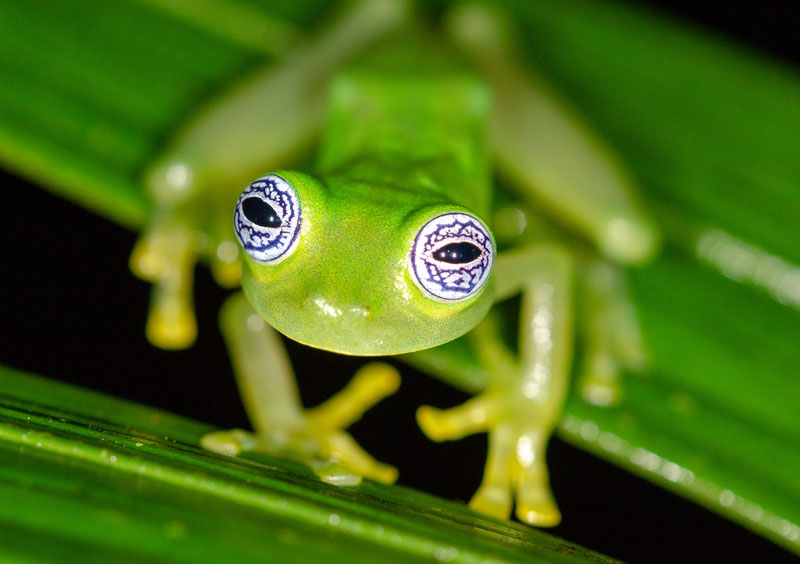
Have you ever watched a tree frog eat? if you ever get the chance, do it, it’s quite entertaining. Pay attention to their eyes.
You see, a frogs’ eyes not only allow them to see but they’re used to help them swallow their food!
Tree frogs have unusually large eyes compared to the size of their skull. Those big eyes sink into their skulls as they swallow. The eyes put pressure on their mouth which helps to push food into their throat.
2. Tree frogs are poisonous
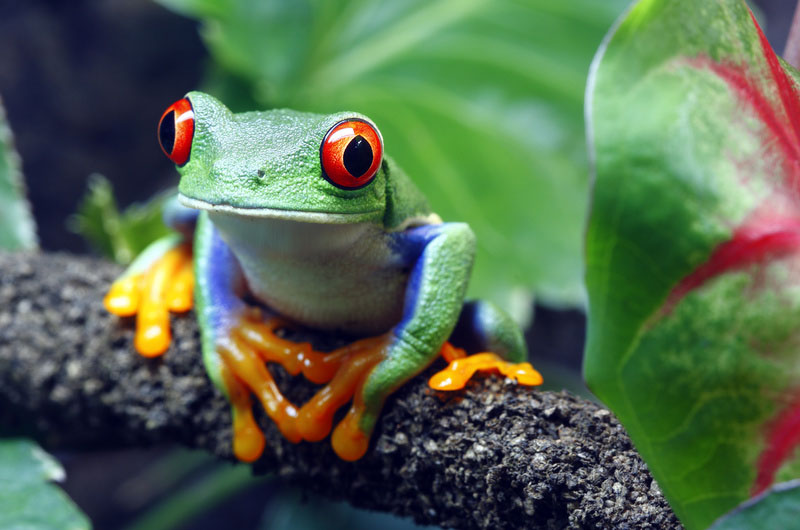
Technically speaking, tree frogs are poisonous. Frogs produce toxins in their skin which is used as a defense mechanism against other small animals. Since poison is defined as a harmful substance absorbed by touching or ingesting. Therefore, tree frogs are “poisonous”.
Don’t worry, most frogs are harmless. Just because their skin has toxins doesn’t mean it’s harmful to humans. In fact, the majority have toxins virtually undetectable to humans and barely noticeable to pets like cats and dogs.
While it’s true that there’s no reason to fret MOST frogs, there actually are a handful of potentially deadly amphibians around the world. One of which you’ll learn more about on tree frog fact #8!
3. Gliding tree frogs
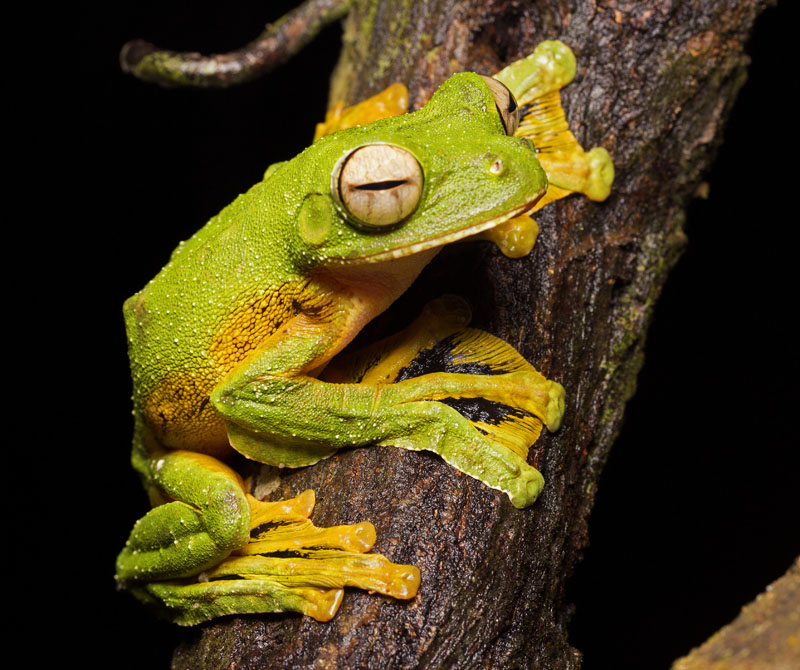
A brightly colored tree frog hailing from the jungles of Malaysia and Borneo has adapted the ability to glide. That’s right, they can glide!
Much like gliding squirrels, and other species who’ve developed this ability, they can jump and glide from one tree to the next. Wallace’s flying frog, also known simply as “Gliding frog”, uses its webbed feet and loose skin to glide.
4. There are tree frogs with translucent skin
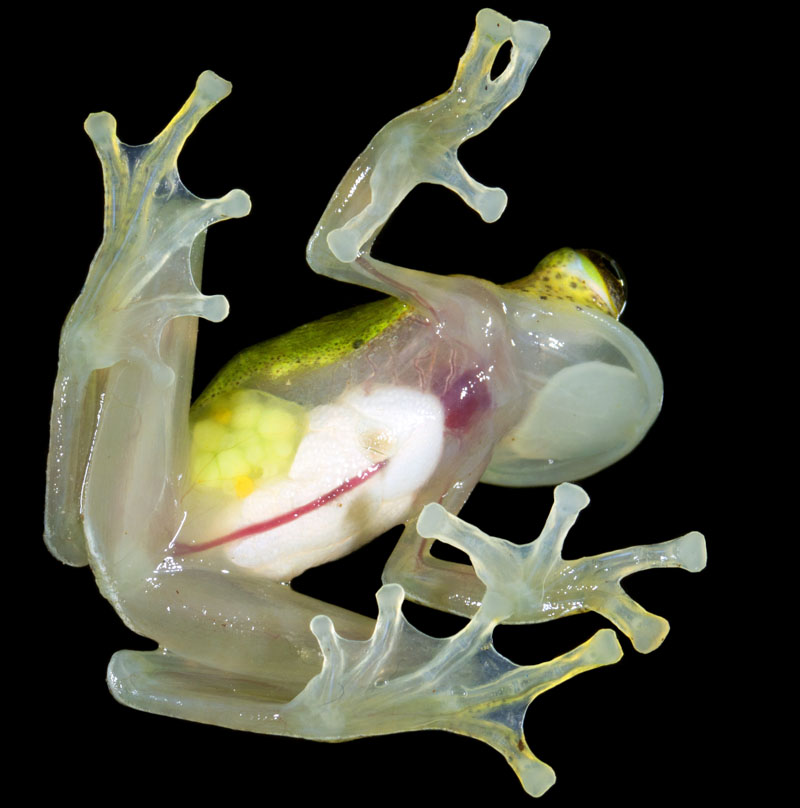
There are a small number of tree frogs, ranging from 1.2 – 3 inches in length, that have semi-transparent skin on their stomach. Can you guess their common name? It’s Glass Frog (lol).
Glass frogs, as their name suggests, have see-through skin. It’s only on their belly though. The rest of their body is usually a green color. The translucent skin covers their internal viscera, which includes their heart, liver, and digestive tract.
Glass frogs are native to parts of Central and South America, predominately in the tropical montane cloud forest.
5. Some tree frogs can change color
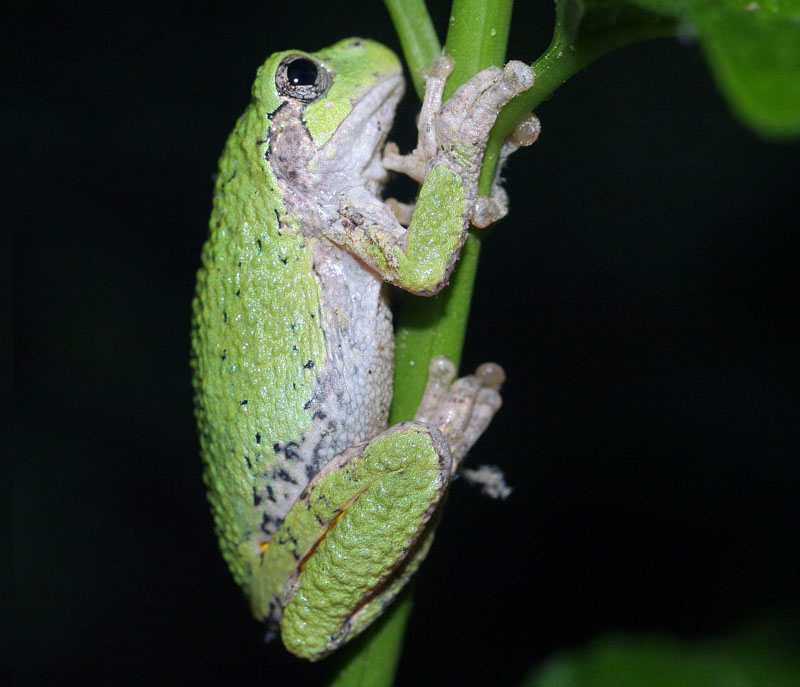
Some tree frogs have the ability to change color to better blend into their environment. It happens much like a chameleon changes colors, only at a slower rate. One of the most distinguishable species that can do change colors is Hyla versicolor, also known as Gray Tree Frog.
Gray tree frogs are native to the Eastern parts of the US and can also be found in Southeastern Canada. One minute they’re gray, as their name implies, and the next, green (as you can see in the picture above)!
They’ve adapted the ability to change colors from dark brown (nearly black), gray, and even green. This change in color serves as a defense mechanism essentially. The better they are at camouflage, the more likely they are to avoid predators and continue living.
6. Tree frogs are popular pets
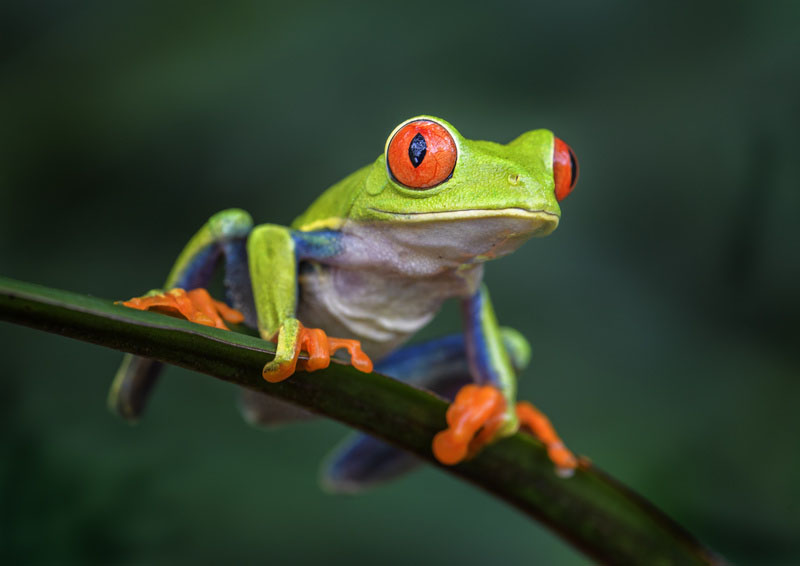
Hobbyists, those in the “herptile” community, have been raising tree frogs in captivity for years. Not only are they common to see in most zoos, but you can buy them from pet stores and local breeders, and keep them in your own home.
The main purpose of this website is to help beginning hobbyists provide better care for pet frogs! If this sounds like a topic you’re interested in, I encourage you to take a look around the website.
A word of caution: Frogs are delicate animals! They don’t tolerate handling very well and their captive habitat should be created to replicate their natural environment. Careful preparation is required!
Two of the most popular tree frogs in the hobby are Dumpy tree frogs and Red-eyed tree frogs. In my opinion, red-eyed tree frogs are the most well-known tree frog in the world. They have fantastic colors; green, blue, red, and orange. Their eyes, as their name suggests, are red! Interestingly, they have these super cool eyelids that partially cover their eyes while they’re sleeping.
Following closely behind the red-eyed tree frog in popularity is the “Dumpy tree frog”. Dumpies are also known as “White’s tree frogs” or Australian green tree frogs. In Australia, they’re known simply as “Green tree frogs”. They’re exceptionally large compared to other tree frog species. Also, they are one of the only species that occasionally tolerate handling.
7. There are “true” tree frogs…
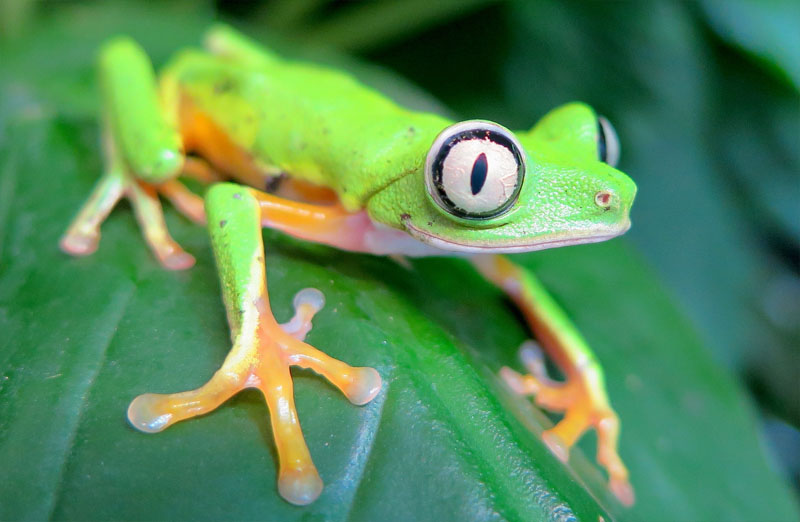
A tree frog is generally classified as a frog within the Anura order (frogs and toads) that spends most of its life in trees (arboreal). Sounds good, right? Well, keep reading because there is more to this. Within the Anura order are different Families.
There are four families considered tree frogs. One family, in particular, contains all the “true” tree frogs. That family is the Hylidae family. Despite being named “true” tree frogs, this family includes semi-aquatic and even terrestrial (land-dwelling) species!
8. Venomous tree frog more deadly than Brazillian pit vipers
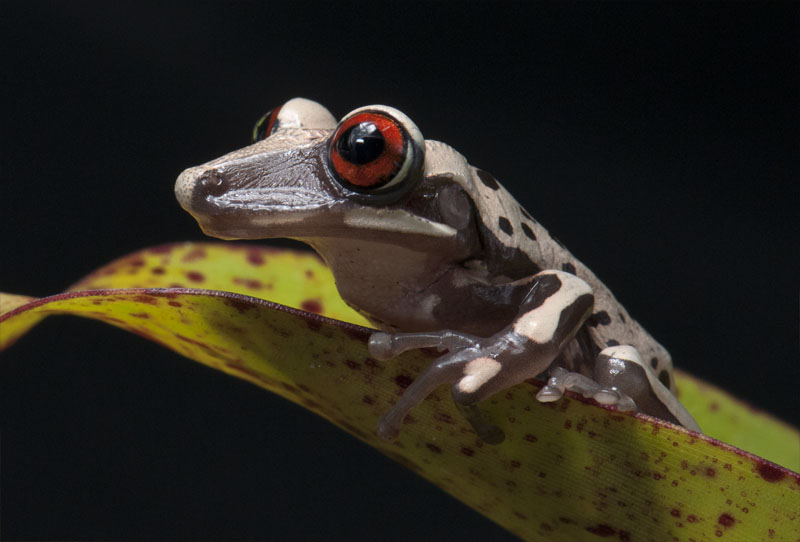
This is shocking in more ways than one. The first reason is the idea of a frog having a toxin more powerful than that of a pit viper is hard to believe. Crazy, right? Believe it or not, it’s estimated to be 25x more lethal than Brazilian pit vipers in the Bothrops genus.
The second reason this is shocking is that frogs are generally considered poisonous. Note the difference between poison and venom. Poison is ingested or absorbed while venom is injected via fangs, stingers, etc.
Don’t worry – tree frogs don’t have fangs or stingers. Some frogs have teeth but none of them deliver venomous bites (not that I know of).
Bruno’s casque-headed frog (Aparasphenodon brunoi) is an arboreal species located in South America. They’re found from Rio de Janeiro to Porto Seguro, along the coast. This is the venomous tree frog. So, why is it venomous and not poisonous?
The reason it is venomous and not poisonous is due to the delivery method of the toxins. You see, Bruno’s frog has tiny spines on its skull. They have potent toxins in-between the spines on their skull and their outer layer of skin. So, when a predator bites the head of a Bruno’s Frog, the spikes on their skull penetrate the predator – along with the toxins.
A. brunoi is not the only species with this remarkable ability, mind you. Greening’s Frog (Corythomantis greeningi) has more developed spines but its toxins aren’t as powerful as Bruno’s frog [1].
9. Many tree frogs lay their eggs out of water
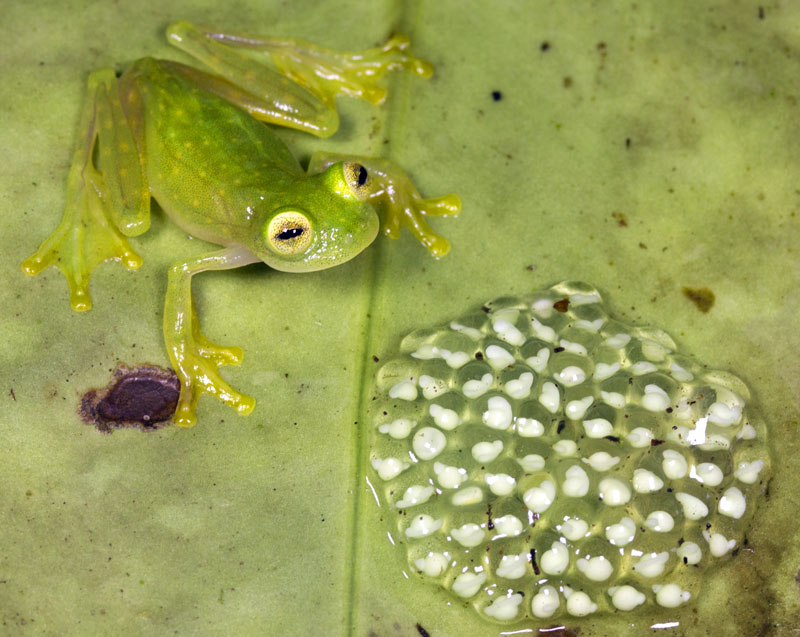
As you already know, frogs begin their lives in larval form, as tadpoles. Adult mals and female frogs find each other during the mating season, usually after heavy rain and when the temperatures are rising and food is more plentiful.
The male frog grasps the female from behind in what’s known as “amplexus”. Next, the female lays her eggs while the male fertilizes the eggs outside the body. Most frogs lay their eggs in pools of water. You’ve likely seen tadpoles swimming in a drainage ditch, puddle, pond, or stream.
What you might not know is that not all frogs lay their eggs in water. In fact, some frogs, usually treefrogs, attach their eggs to the underside of leaves – outside of water. The eggs remain attached to the leaves until the tadpoles have grown enough to hatch from the egg.
What happens when they hatch from the eggs? Well, assuming their mother did a good job placing them, the tadpoles hatch from the eggs and fall directly into a suitable body of water!
The tadpoles still need water to live, of course. However, they can live inside the yolk of their egg until they’re big enough to hatch. From that point, they need to remain in the water until they metamorphose into juvenile tree frogs.
10. Tree frogs have sticky toes
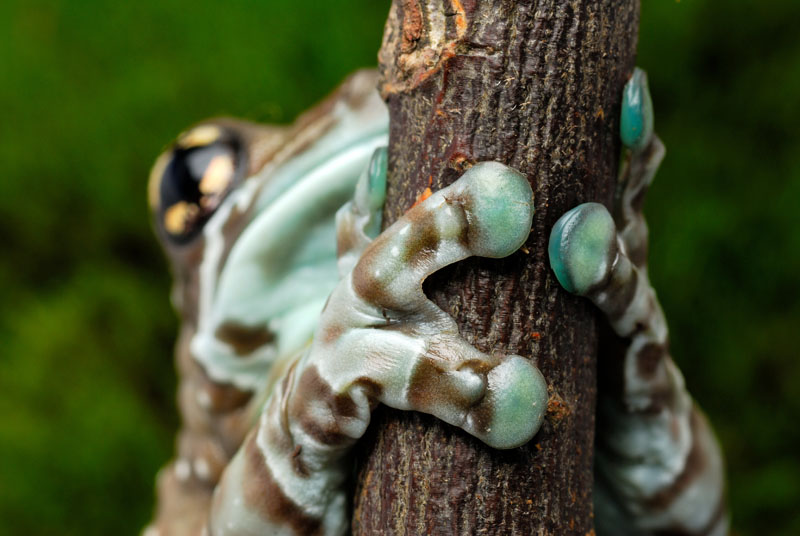
We’ve all seen a tree frog seemingly stuck on the side of a wall, a window, or a leaf. Researchers have been uncovering their secret for years now and here is what they’ve learned.
By studying a White’s tree frog, researchers at the University of Glasgow discovered their toe pads are coated in a thin mucus substance [2]. It uses mucus to adhere to surfaces; also known as wet adhesion.
Moreover, the frog’s ability to adhere to surfaces doesn’t come from the mechanical force but rather a game of geometry and angles. There are small hexagonal patterns on the toe pads that allow parts of their feet to stay in contact with the surface; this creates friction.
Another secret comes from the angle at which their toe pads are placed. An angle at 90 degrees or below is utilized when the tree frog wants to remain adhered to a surface. Upon moving, they adjust the angle of their pads above 90 degrees!
References
- Jared, Carlos, et al. “Venomous Frogs Use Heads as Weapons.” Current Biology, vol. 25, no. 16, 2015, pp. 2166–70. Crossref, https://doi.org/10.1016/j.cub.2015.06.061[↩]
- Barnes, W. Jon. P., et al. “Comparative Cryo-SEM and AFM Studies of Hylid and Rhacophorid Tree Frog Toe Pads.” Journal of Morphology, vol. 274, no. 12, 2013, pp. 1384–96. Crossref, https://doi.org/10.1002/jmor.20186[↩]
